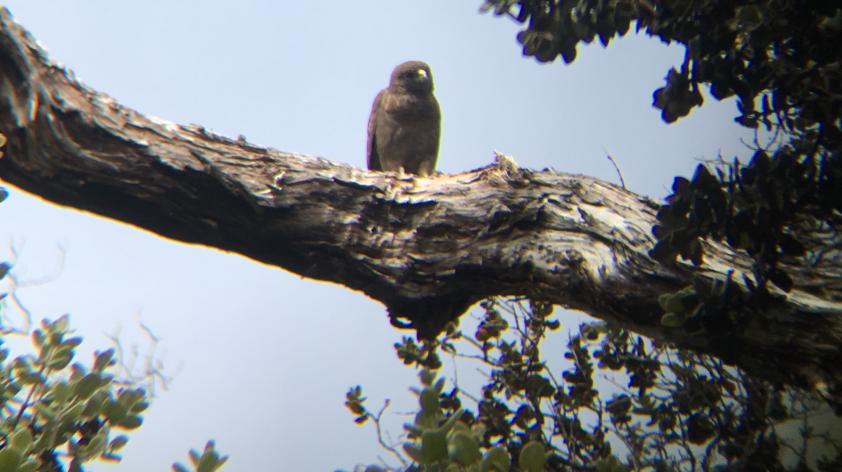
Establishing anti-predator behavior in ‘alalā
Whenever a species is reintroduced back into the wild, one of the survival-relevant behaviors you hope they exhibit is anti-predator behavior. Without an awareness of predators and without appropriate behavior to evade them, released individuals stand little chance. In the case of the native Hawaiian crow, the ‘alalā, their anti-predator behavior needs to help them avoid the ‘io, the endangered Hawaiian hawk.
In the 1990s, increased predation by ‘io was a factor in the final decline of the last surviving wild and reintroduced populations of ‘alalā, and last year it became apparent that the issue would also be pertinent to new releases. Two newly released ‘alalā were lost to ‘io, prompting researchers at SDZG, numerous conservation partners, and outside collaborators to reevaluate an anti-predator training program for ‘alalā. In the end, we staged a simulated predation event with a live ‘io in front of ‘alalā release candidates, hoping they would learn to recognize the ‘io as a threat. We aimed to recreate a predatory situation with the highest biological relevance possible, given the circumstances.
Observed encounters between ‘alalā and ‘io have been historically very rare. Only a handful of interactions were officially recorded before the species went extinct in the wild. Therefore, when it came to designing anti-predator training, there was a level of uncertainty about what would be the most beneficial behaviors for us to observe and train.
However, recent field observations of the cohort of ‘alalā that were released this past fall have been giving us tantalizing glimpses into what their natural defenses may have looked like.
Our field team monitors the survival and behavior of the release cohort every day from sunrise to sunset. In the midst of the many hours of tracking, every now and then one of us is lucky enough to see something that we haven’t yet seen with these birds before. The other week it was my turn for a lucky day.
I was sitting in an observation corridor inside the bird release aviary, when suddenly I heard faint ‘io calls coming from nearby. I quickly left the aviary and began scanning the area. Before long, the silhouette of an ‘io darted across an opening in the forest towards the area where the group of released ‘alalā were last heard. I jumped on the walkie-talkie to alert one of our team members who was in the vicinity. In an instant all of the forests’ birds went silent, including the ‘alalā. I looked up and three ‘alalā were circling high above the forest, in pursuit of the ‘io. The ‘io flew with an erratic flight path, as if evading the ‘alalā, with the three birds chasing it as they circled in the sky. Together the four birds flew higher and higher before silently disappearing over the tree line. The whole encounter from the sound of the ‘io to the last sight of the chasing group lasted no more than five minutes.
While we will never know if this defensive behavior was a direct result of anti-predator training, it gives a window into anti-predator behavior in ‘alalā. The released birds clearly identified the ‘io as a predator, by falling silent as it approached and then engaging in mobbing. Such mobbing behavior is common in many corvid species (the family to which the ‘alalā belong), and may be of great help in preventing predation in future. Given the history of the ‘alalā, we certainly hope this is the case.
(Photo by Joshua Pang-Ching)













